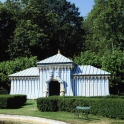
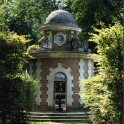
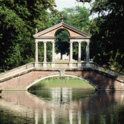
Build in 1960 and designed in painted metal, The Tartar Tant interior is entirely lined with 10000 Delft tiles. It was inspired by that which King Gustav 111 of Sweden erected in 1781 in Drottningholm.
At the centre of a small maze labyrinth, a "stone monument", built in 1967.
Designed in 1960 by Emilio Terry, it reminds us of the Wilton-park Bridge in England and the Guglie bridge in Venise, where Charles de Beistegui owned the Labia Palace, in which the "Ball of the Century" was held in 1951.
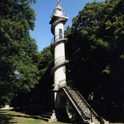
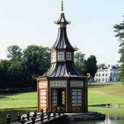
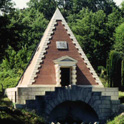
Inspired by the Place Vendome column it was build in 1962. It offers a view of the countryside of Ile de France from its summit.
Designed by Emilio Terry the Cuban-born interior designer and architect and close friend of Charles de Beistegui, the pagoda, created in 1963, required the construction of a pond, as island an island and other significant works.
In 1968, Beistegui conceived this pink brick pyramid, inspired by that of Caiius Sestius in Rome.
The LOVE TEMPLE
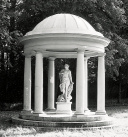
The first of the "stone monuments" of Groussay, reminiscent of the Trianon, was built in 1949.